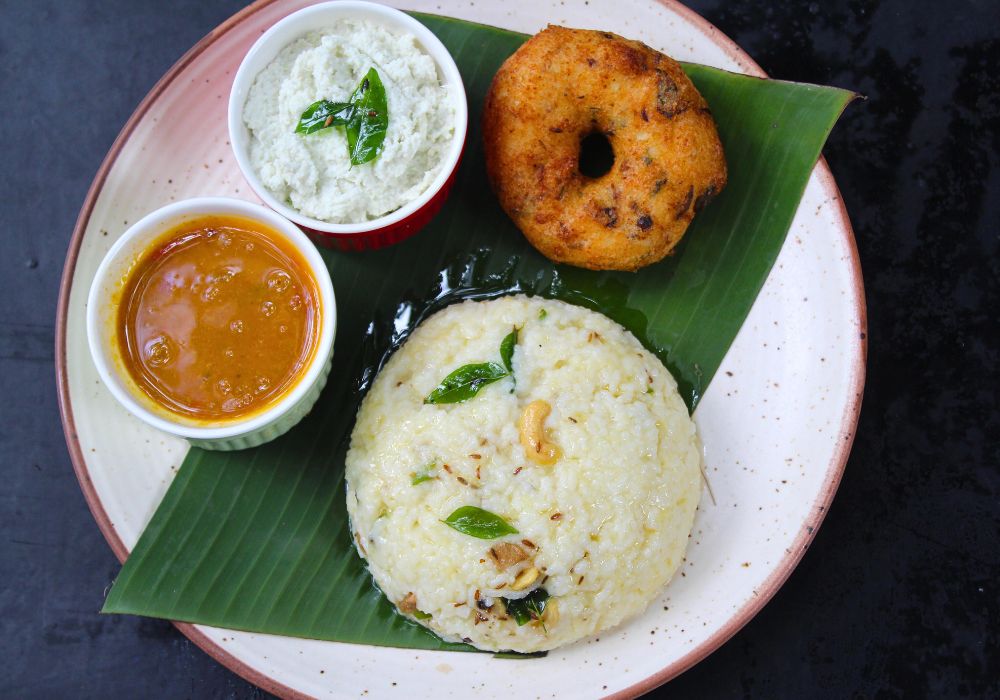
Pongal Recipe Karnataka and Tamilnadu Style - Ingredients and Cookware
Pongal, a harvest festival celebrated with grandeur in South India, commemorates the bounty of nature and is a vibrant tribute to tradition, family, and delicious food. This auspicious festival revolves around the preparation and sharing of the iconic dish, also named Pongal. Let's delve into the essence of this celebration, its unique recipe, and the customs associated with it.
Pongal Festival Overview
When is Pongal Celebrated?
Pongal typically falls between January 13th and 16th, marking the arrival of the auspicious Tamil month of Thai. It spans four days: Bhogi Pongal, Thai Pongal, Maatu Pongal, and Kaanum Pongal. Each day has its distinctive rituals, but Thai Pongal holds the central celebration, glorifying the preparation and consumption of the dish named after the festival.
Where is Pongal Celebrated?
Primarily celebrated in Tamil Nadu, Pongal resonates across other South Indian states like Karnataka, Andhra Pradesh, and Telangana. Homes are adorned with kolams (decorative patterns), and people gather to prepare the traditional dish and offer prayers to the Sun God, expressing gratitude for a bountiful harvest.
Pongal - The Iconic Dish
Ingredients for Traditional Pongal
- 1 cup raw rice (preferably short-grain)
- ½ cup split yellow moong dal
- 2 cups water
- 2 cups milk
- Jaggery or brown sugar (as per taste)
- A handful of cashew nuts
- Raisins (optional)
- Cardamom pods (ground)
- Ghee (clarified butter)
Cookware for Authentic Pongal Preparation
For crafting the traditional Pongal dish, you'll need:
- A sturdy cooking pot or pressure cooker for the rice-dal mixture.
- A separate pan or kadai for roasting nuts and raisins and melting jaggery.
Pongal Preparation - Tamil Nadu Style
The traditional Pongal recipe begins by boiling the rice-dal mixture in water and milk. It's sweetened with jaggery and flavored with cardamom. Cashews and raisins, fried in ghee, are added for a delightful crunch and aroma.
Pongal Preparation - Karnataka/Kannada Style
In Karnataka, Pongal, also known as 'Huggi,' might include a savory twist with more spices like pepper, cumin, and ginger. The use of jaggery might differ, with some regions preferring a touch of sweetness while maintaining the dish's predominantly savory nature.
Significance of Pongal
Pongal represents gratitude for a prosperous harvest and a celebration of nature's bounty. The dish itself symbolizes abundance and is prepared as an offering to the Sun God, expressing gratitude for agricultural abundance and seeking blessings for future harvests.
Conclusion
Pongal is more than a dish; it's a celebration of togetherness, gratitude, and the rhythms of nature. As families come together, preparing and relishing this flavorful dish, they reinforce the significance of tradition and the joy of a bountiful harvest.
See below our Bestsellers of Paniyarakkal 👇
Featured collection
-
Original price - Original priceOriginal price Rs. 19.99Rs. 19.99-Current price Rs. 19.99
Product title
Original price - Original priceOriginal price Rs. 19.99Rs. 19.99-Current price Rs. 19.99 -
Original price - Original priceOriginal price Rs. 19.99Rs. 19.99-Current price Rs. 19.99
Product title
Original price - Original priceOriginal price Rs. 19.99Rs. 19.99-Current price Rs. 19.99 -
Original price - Original priceOriginal price Rs. 19.99Rs. 19.99-Current price Rs. 19.99
Product title
Original price - Original priceOriginal price Rs. 19.99Rs. 19.99-Current price Rs. 19.99 -
Original price - Original priceOriginal price Rs. 19.99Rs. 19.99-Current price Rs. 19.99
Product title
Original price - Original priceOriginal price Rs. 19.99Rs. 19.99-Current price Rs. 19.99 -
Original price - Original priceOriginal price Rs. 19.99Rs. 19.99-Current price Rs. 19.99
Product title
Original price - Original priceOriginal price Rs. 19.99Rs. 19.99-Current price Rs. 19.99
Blog posts
-
-

What is Karahi or Kadahi? Exploring Its Best Use in 2024 | Non Stick
The kadai or karahi holds a special place, when it comes to Indian cooking,choose MACclite kadai cookware for a healthier and more enjoyable cooking experience.Read now -

Best Tawa for Roti 2024 - Guide to Choosing the Best Iron Tawa for Your Family
The roti tawa is the right tool to achieve the ideal texture and taste. Finding the perfect roti tawa for your family can be both rewarding and challenging in 2024 due to the many options available.Read now


